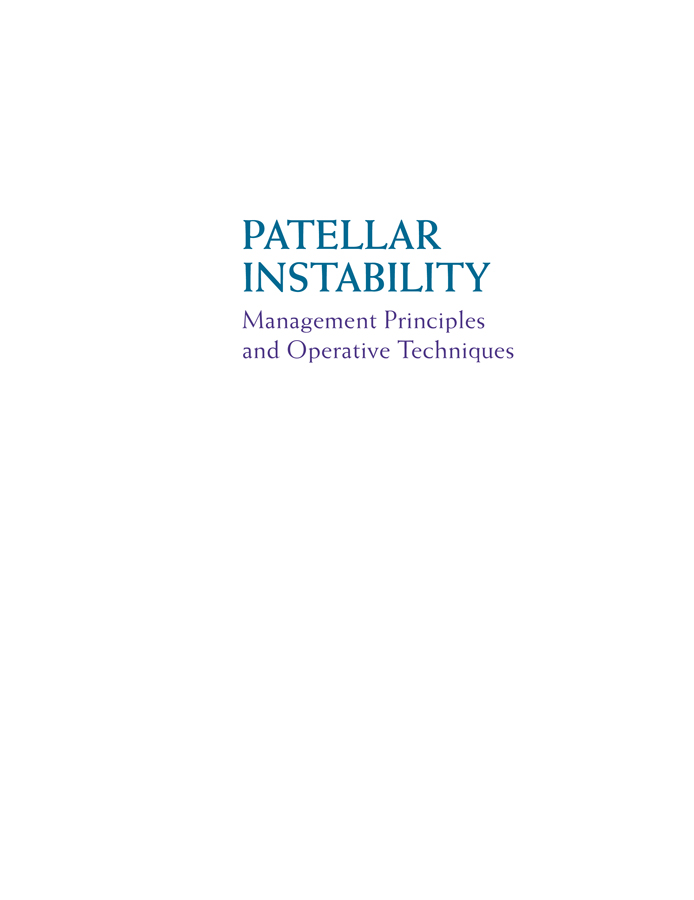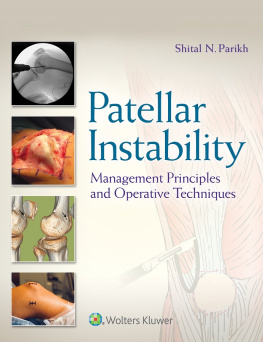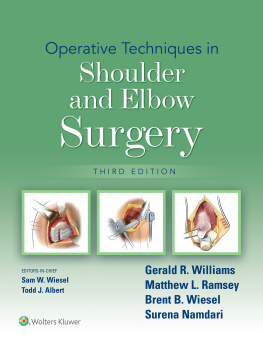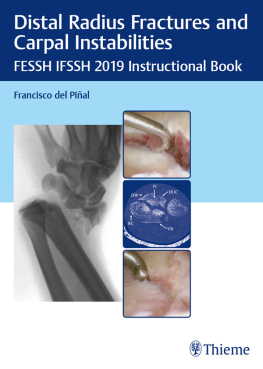

Executive Editor: Brian Brown
Product Development Editor: Liz Schaeffer
Editorial Coordinator: Andrea Klinger
Marketing Manager: Julie Sikora
Designer: Holly McLaughlin
Production Project Manager: Barton Dudlick
Compositor: S4Carlisle Publishing Services
Copyright 2020 Wolters Kluwer.
All rights reserved. This book is protected by copyright. No part of this book may be reproduced or transmitted in any form or by any means, including as photocopies or scanned-in or other electronic copies, or utilized by any information storage and retrieval system without written permission from the copyright owner, except for brief quotations embodied in critical articles and reviews. Materials appearing in this book prepared by individuals as part of their official duties as U.S. government employees are not covered by the above-mentioned copyright. To request permission, please contact Wolters Kluwer at Two Commerce Square, 2001 Market Street, Philadelphia, PA 19103, via email at permissions@lww.com, or via our website at shop.lww.com (products and services).
Library of Congress Cataloging-in-Publication Data
ISBN-13: 978-1-4963-8082-1 | eISBN: 9781496380838
ISBN-10: 1-4963-8082-7
Cataloging-in-Publication data available on request from the Publisher.
This work is provided as is, and the publisher disclaims any and all warranties, express or implied, including any warranties as to accuracy, comprehensiveness, or currency of the content of this work.
This work is no substitute for individual patient assessment based upon healthcare professionals examination of each patient and consideration of, among other things, age, weight, gender, current or prior medical conditions, medication history, laboratory data and other factors unique to the patient. The publisher does not provide medical advice or guidance and this work is merely a reference tool. Healthcare professionals, and not the publisher, are solely responsible for the use of this work including all medical judgments and for any resulting diagnosis and treatments.
Given continuous, rapid advances in medical science and health information, independent professional verification of medical diagnoses, indications, appropriate pharmaceutical selections and dosages, and treatment options should be made and healthcare professionals should consult a variety of sources. When prescribing medication, healthcare professionals are advised to consult the product information sheet (the manufacturers package insert) accompanying each drug to verify, among other things, conditions of use, warnings and side effects and identify any changes in dosage schedule or contraindications, particularly if the medication to be administered is new, infrequently used or has a narrow therapeutic range. To the maximum extent permitted under applicable law, no responsibility is assumed by the publisher for any injury and/or damage to persons or property, as a matter of products liability, negligence law or otherwise, or from any reference to or use by any person of this work.
shop.lww.com
To my wife, Preeti, for her love, patience, and support
To my children, Ria and Rohan, for allowing me to take precious time away from home
To my parents, Kokila and Navnit, for their blessings and encouragement
SHITAL N. PARIKH
Section Editors
Elizabeth A. Arendt, MD
Professor and Vice Chair
Department of Orthopaedic Surgery
University of Minnesota
Minneapolis, Minnesota
Donald Fithian, MD
Associate Surgeon
Torrey Pines Orthopaedic Medical Group
La Jolla, California
John P. Fulkerson, MD
Clinical Professor
Department of Orthopedic Surgery
School of Medicine, University of Connecticut
Farmington, Connecticut
Partner
Orthopedic Associates of Hartford
Bone and Joint Institute
Hartford, Connecticut
Robert A. Magnussen, MD, MPH
Associate Professor
Sports Medicine Research Institute
Department of Orthopaedics
The Ohio State University
Columbus, Ohio
Shital N. Parikh, MD
Professor of Orthopaedic Surgery
University of Cincinnati College of Medicine
Co-Director
Orthopaedic Sports Center
Cincinnati Childrens Hospital Medical Center
Cincinnati, Ohio
Hui James Hoi Po, MBBS, FRCS, MD
Head of Paediatric Orthopedics
Department of Orthopaedic Surgery
University Orthopaedics, Hand and Reconstructive Microsurgery Cluster
National University Health System (NUHS)
Singapore, Singapore
Beth E. Shubin Stein, MD
Associate Professor
Department of Sports and Shoulder Surgery
Hospital for Special Surgery
New York, New York
Robert A. Teitge, MD
Professor
Department of Orthopaedic Surgery
Wayne State University
Staff Surgeon
Department of Orthopaedic Surgery
Detroit Medical Center
Detroit, Michigan
Foreword
D r Shital Parikh has been a devoted student and a scholar of patellofemoral joint. I applaud him for undertaking this great effort to further advance the understanding of patellofemoral surgery.
Because patellar instability is multifactorial, varied surgical approaches have been recommended to address it. In the 1970s and 1980s, there were predominantly two schools of thought about patellofemoral surgeryboth advocating surgical realignment as treatment for instability and/or pain in many cases. In one, the tibial tubercle was moved medially (as advocated by Drs Elmslie, Trillat, Hauser, Cox, and others). In the other, a major imbrication of the medial patellofemoral retinacular structures was performed (as advocated by Dr John Insall in the United States). Often, surgeons would focus on one or the other approach fairly exclusively, regardless of indications. Extensive lateral releases were often done (often percutaneously, resulting in painful hemarthrosis). In failed cases, the answer might be to remove the patella (patellectomy). Anteriorization of the tibial tubercle was recommended by Dr Maquet as a way to unload the patella, but too often it resulted in complications. Patellofemoral arthroplasties were inconsistent and generally not popular until Dr Allan Merchant and others refined the techniques and designs of implants.
In the United States during the 1980s, patellofemoral surgery was not too popular, mostly because results were unpredictable. Drs Allan Merchant, Bob Teitge, Eric Radin, Scott Dye, and I would often be the only ones available to talk about patellofemoral surgery at US meetingsusually to a small crowd. Fortunately, in Lyon, France, Alfred Trillat, Henri Dejour, and others of the Lyon School were curious about the patellofemoral joint and provided logical approaches to patellofemoral surgery. These were pioneers of modern patellofemoral surgery.
We founded the International Patellofemoral Study Group in 1995 and were quickly joined by about 25 knee surgeons with special interest in the patella. There was a subsequent explosion of new information and academic contributions were made by many orthopedic surgical scholars such as Drs Parikh, Neyret, Dye, Nomura, Espregueira-Mendes, Magnussen, Teitge, Amis, Donell, Mochizuki, Sanchis-Alfonso, Post, Cosgarea, Fithian, Green, Tanaka, Arendt, Dahm, Dejour, Andrish, Biedert, Merchant, Farr, Grelsamer, Shelton, Bicos, Spang, Joseph, Schoettle, Koh, Elias, Servien, Bollier, Hiemstra, Kuroda, Diduch, Sgaglione, Beach, Laprade, Strickland, Almqvist, Albright, Gomoll, Biedert, Edgar, Shubin Stein, Sherman, Munch, Yanke, West, Halbrecht, Silanpaa, Askenberger, Fink, Hinckel, Tompkins, Abdelkafy, Seitlinger, Liebensteiner, Lattermann, and others.













